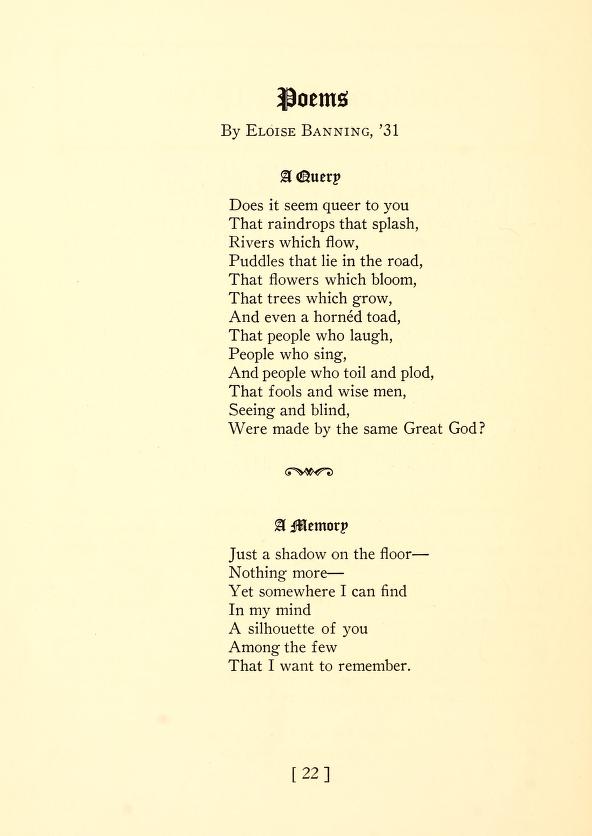Established in 1897, the Coraddi is the longest running publication on the UNC Greensboro campus. Originally published as an art and literature journal under the name State Normal Magazine, it became the Coraddi when the school transitioned into the North Carolina College for Women in 1919. The new title derived from an amalgamation of the names of the Cornelian, the Adelphian, and the Dikean literary societies. While the magazine initially reported college news, in the 1920s it began to feature student editorials, short fiction, book reviews, and poetry.
Within the pages of the magazine, the young women pondered their role as members of the student body and as citizens of the broader world. Featured articles and poetry revealed the sheltered young women’s desires for travel and adventure. Their writings reflected real and imaginary activities, ranging from an actual trip to a YWCA Conference in Philadelphia to an imagined voyage to France. One student dreamed of hopping a train like a “hobo,” and heading to parts unknown.
 |
| The Coraddi, December 1928 |
In addition to tales of travel, the Coraddi also included matters closer to home. An editorial titled, “Students in the Library,” featured an anonymous complaint about the general noise level in the library, speculating that there were only a “half a dozen students on the campus who really try to study.” Further complaints were levied against her peers who were in the habit of borrowing reserved material without checking it out. Another student turned her criticism toward campus teachers in an editorial titled, “The College Delusion.” She declared that the students didn’t need faculty by their senior year, claiming “what we learn is of our own digging, and does not issue from the knowledge of any one else.” Another student, Mary McDuffie, penned an article in defense of chewing gum, an activity basically outlawed by the faculty.
The Coraddi also became an important venue for students to express their feelings and beliefs, which were in some cases, very liberal for the times. In a fall 1924 article, Mary Eliason challenged her classmates to understand African Americans through the spirit and soul of their poetry, and not through “unsympathetic Anglo-Saxon” eyes. She stressed that it is through the poetry of African Americans that one can hear their “cries of despair, of hope, of remonstrances.” Other students wrote their own poetry, with themes such as waiting, life, change, and wanderlust. Book reviews were also a popular addition to the magazine, allowing students to honestly assess novels by women authors, such as Edith Wharton and Frances Brett Young.
The magazine’s cover art also gave students a way to express their creativity. While the early Coraddi covers were simple, by the mid-20s, both whimsical and modern artwork began to appear. A student contest determined what design would be on the cover. The student would not only have her work featured on the front of the magazine, she would also receive five dollars. In some cases, the artist’s initials are woven into the pen and ink drawings – “ABJ” seems to be the illustrator of Coraddis published in1924 and 1925. Other cover art remains anonymous.
The creative designs and writings in the Coraddi mirrored the imagination, hopes, and dreams of the students attending the North Carolina College for Women in the 1920s. Now the magazine, published semi-annually, continues to provide a platform to showcase art and literature from current students, faculty, staff, and alumni.
By Kathelene McCarty Smith


